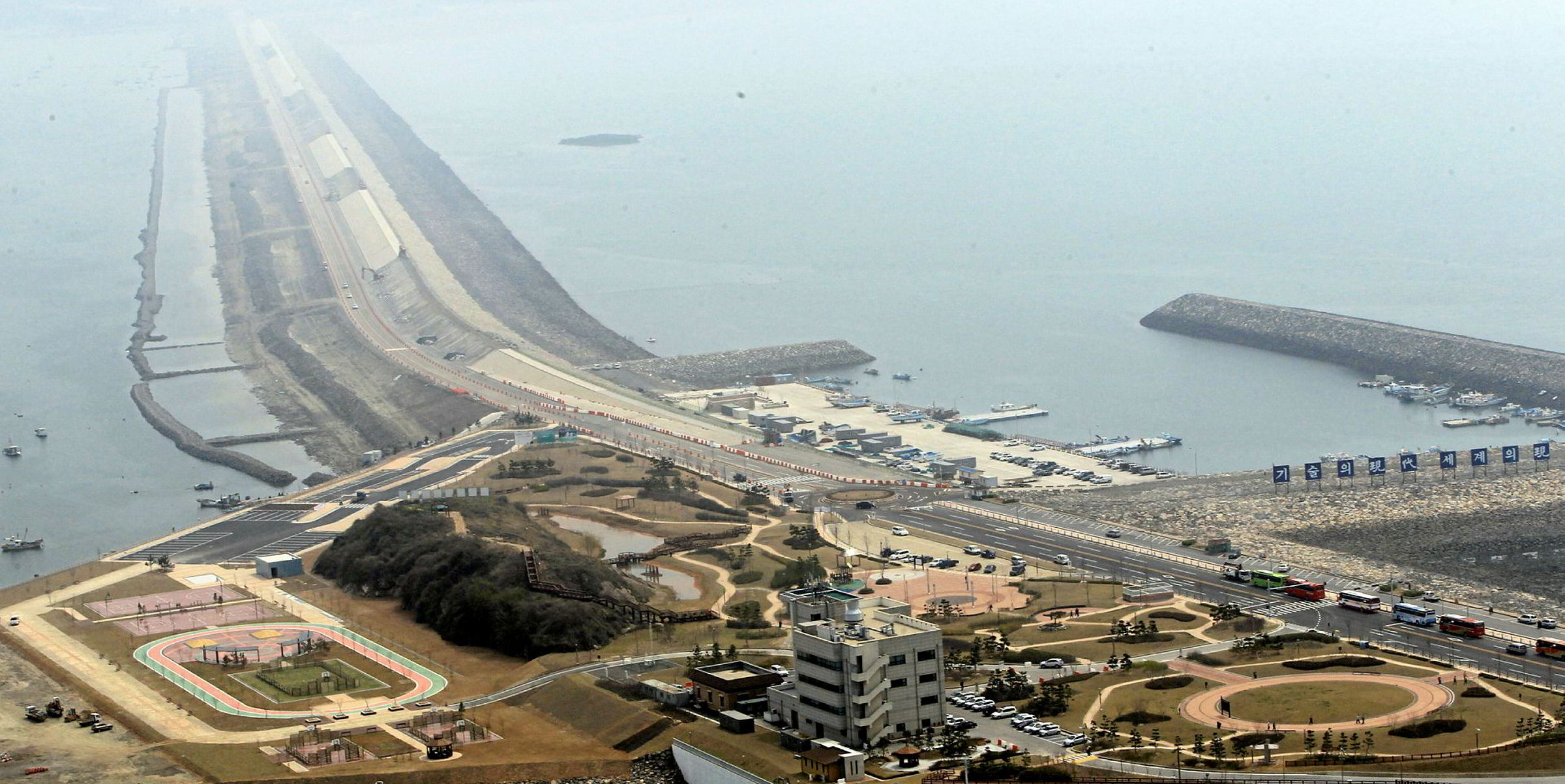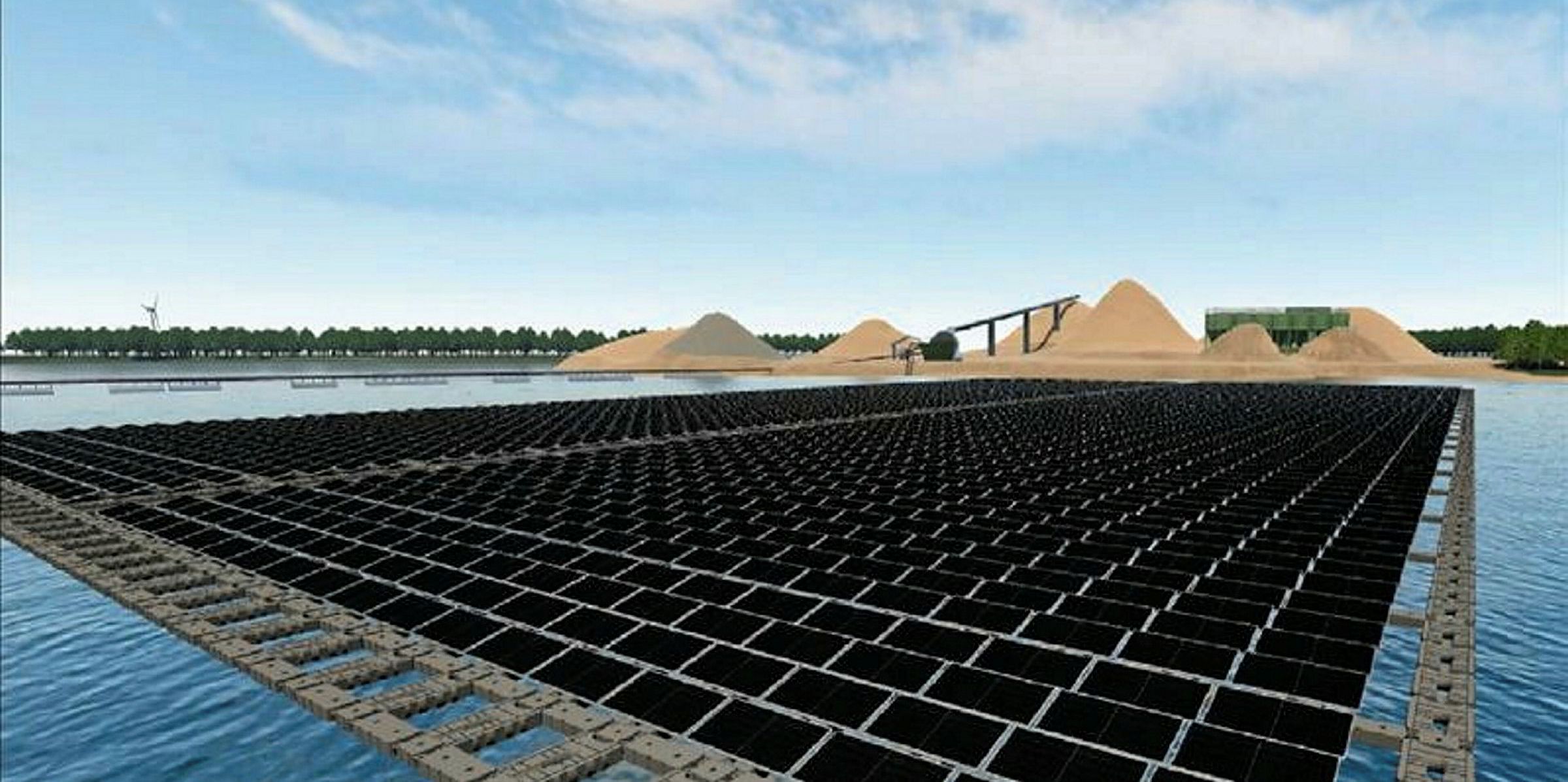Almost 5% of the surface of artificial lakes at former mines mostly in Eastern Germany could be used for floating PV, Fraunhofer ISE says

BayWa r.e.'s Sekdoorn floating PV array in the Netherlands
Photo: BayWa re
4 February 2020 By Bernd Radowitz
4 February 2020 By Bernd Radowitz
Artificial lakes at former German open pit lignite mines hold a technical potential for 56GW of PV capacity, a study by the Fraunhofer ISE institute awarded by renewables developer BayWa r.e. concludes.
Once areas earmarked for leisure activities and tourism, as well as nature and landscape protection are subtracted, a real economic potential of 2.74GW for floating PV remains.
“Floating PV plants are a relatively new concept for the use of photovoltaics, for which, however, a large power generating potential exists world-wide,” Fraunhofer ISE institute director Andreas Bett said.

South Korea plans world’s largest floating solar plant in Yellow SeaRead more
The publication of the study comes just after the German cabinet has approved a schedule to shutter 41GW in coal and lignite capacity by 2038 at the latest.
The institute calculates that for a success of the country’s Energiewende – its transition from nuclear and fossil to renewable energy – a PV expansion of up to 500GW is needed.
Floating PV achieves a high area use efficient of about 1.33 megawatts per hectare, Fraunhofer ISE said. Due to the installation on water, a higher yield can be reached thanks to lower temperatures during operation.
Germany has close to 500 artificial lakes on former lignite mines with a combined area of 47,251 hectares, most of it in Eastern German states. The study estimates that 4.9% of the lakes’ surface could be used for floating solar.
Other artificial lakes have not been included in the study.
BayWa r.e. has already built a 25MW floating PV array in the Netherlands, where the technology is economical given the support it receives there, and is building another array with a capacity of 27.4GW.
“Fraunhofer ISE’s study impressively shows that Germany has an enormous potential for floating PV,” said Edgar Gimbel, head of power plant engineering at BayWa r.e.’s solar projects unit.

Vattenfall set to start building first floating solar farmRead more
“Now the right framework conditions need to be created to simplify the permitting process and use this potential.”
As investment costs for floating PV are somewhat higher as for common ground-based PV, the technology so far hasn’t been successful in German tenders.
“Therefore, innovation tenders specially for floating PV and other area-neutral PV plants would make sense,” said Harry Wirth, PV module and power plant area director at Fraunhofer ISE.(Copyright)
RELATED NEWS
Masdar to build largest floating solar plant in Southeast Asia
Transition
20 January 2020 13:50 GMT
India plans world's largest floating solar power plant at 1GW
Transition
17 October 2019 13:41 GMT
K2 Management to scope out Korean floating wind flagship
Wind
21 August 2019 12:02 GMT
World’s first ‘high-wave’ floating PV array to be built off Belgium
Transition
19 July 2019 9:37 GMT
Xinyi Solar finishes world's largest floating PV array
Solar
6 April 2016 4:49 GMT
Masdar to build largest floating solar plant in Southeast Asia
Transition
20 January 2020 13:50 GMT
India plans world's largest floating solar power plant at 1GW
Transition
17 October 2019 13:41 GMT
K2 Management to scope out Korean floating wind flagship
Wind
21 August 2019 12:02 GMT
World’s first ‘high-wave’ floating PV array to be built off Belgium
Transition
19 July 2019 9:37 GMT
Xinyi Solar finishes world's largest floating PV array
Solar
6 April 2016 4:49 GMT
No comments:
Post a Comment